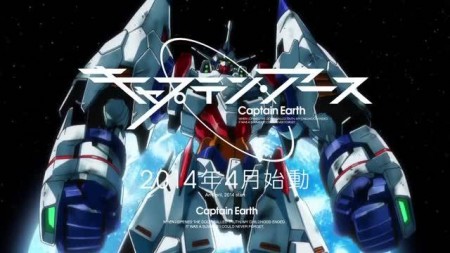Ask John: Are We in a New Period of Robot Anime Prominence?

Question:
In the 2000’s I asked about the trend of classic mecha anime being produced at that time. Now in the 2010’s I noticed a sudden surge of new, original mecha anime being made. Captain Earth, Samurai Flamenco, Damidaler, Buddy Complex, Majin Bone, Gundam Build Fighters, Fuun Ishin Dai Shogun, Valvrave, and Nobunaga The Fool are among the many mecha-themed anime made within the past year alone. And now with the release of Bandai Namco’s “Super Robot Wars Z3” for the PS3 and PS Vita, there seems to be a renewed interest in the mecha genre both in Japan and abroad. Do you believe we are reaching a second “golden age” of mecha just like it was in the 70s when Mazinger Z was released?
Answer:
At times, new trends are difficult to see as they occur and are obvious only in retrospect. Furthermore, a current upswing in mecha anime may be difficult to easily categorize because it’s less unified in tone and theme than earlier comparable trends. But anime production does move in trends, and after a lengthy period without a prominent abundance of robot anime, Japanese and international viewers may be interested in the genre once again. From 1972 until roughly 1983 “super robot” anime were very prolific. Shows including Mazinger Z, Ga-Keen, Dalturnius, Baldios, Acrobunch, Voltes V, and Albegas relatively uniformly depicted giant robots as unique heroic instruments, mechanical embodiments of justice. The robot anime trend of the mid 1980s turned more serious and realistic with the advent of “real robots.” From roughly 1982 through 1989, television series such as Macross, Mobile Suit Z Gundam, Fang of the Sun Dougram, Metal Armor Dragonar, SPT Layzner, Armored Trooper Votoms, Galactic Drifter Vifam, Gunbuster, and Five Star Stories depicted giant robots as mass-produced bipedal tanks, soulless, artificial battle machines that didn’t innately represent good or evil but rather allowed their pilots to exert their own social and political activism. From roughly 1990 until 1997 the robot anime trend was primarily identifiable via children’s mecha anime and “brave robots.” The “Eldoran series” that included Raijin-Oh, Ganbaruger, and Gosaurer were supplemented by comparable children’s robot anime including ExKaiser, Fighbird, Tetsujin 28-gou FX, Might Gaine, Galkiba, Ryu Knight, Dagwon, Lamune & 40, Wataru, and Gaogaiger. However, at the turn of the century, robot anime became less prominent. Anime production turned heavily toward adapting character-centric manga, lite novels, and games. Much of the anime based on toys turned to adapting hobby anime – collectable cards, remote controlled toys, imaginary monsters rather than robots.
Particularly in contrast to the four-year span of 2008 through 2011 that saw an unusually small number of televised giant robot anime series, robot and mecha anime does seem to be making a comeback to Japanese television broadcast since 2012. However, with a variety of tones and approaches that range from nostalgic and lighthearted Tetsujin 28-gou Gao to the satirical current Kenzan Robo Daimidaler to kids’ hobby anime including Danboru Senki Wars and Gundam Build Fighters, to serious “real robot” anime in Kakumeiki Valvrave, Captain Earth, and Sidonia no Kishi, defining a dominant style of robot anime in the current era is difficult, which makes observing a distinctive current trend of robot anime difficult. However, particularly in comparison to the beginning of the two-thousand-teens decade we’re presently in that saw an exceptionally slim number of robot anime, and the announcement for forthcoming robot anime including M3: Sono Kuroki Hagane and Ginga Jinpu Jinraiger, a new rise in TV mecha anime does indeed seem to be upon us.
Add a Comment
You must be logged in to post a comment.


What’s interesting is when even a non-mecha show like Tonari no Seki-kun also gets into the act by bringing in that Transformers-inspired “robot family” for sketches.